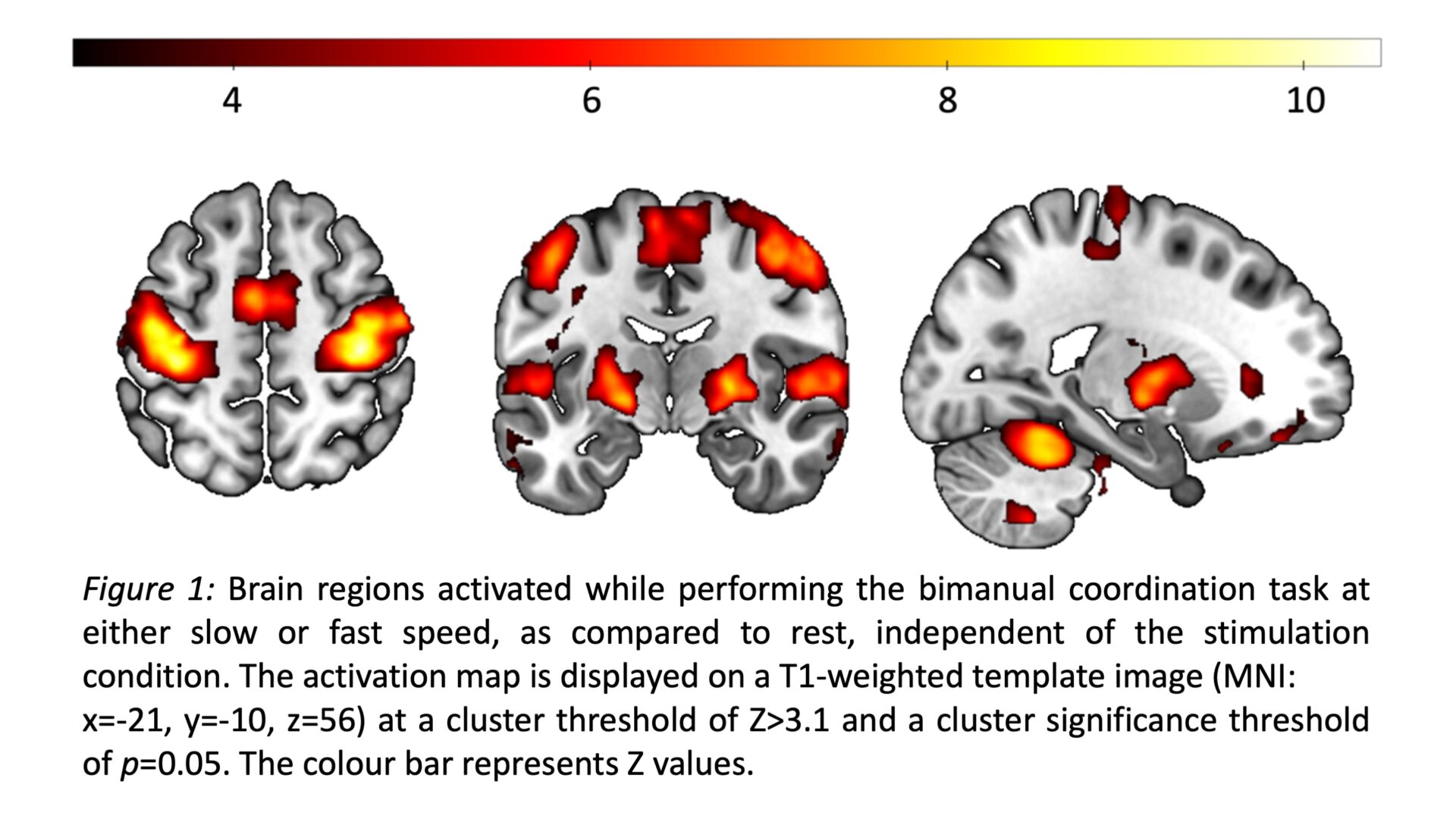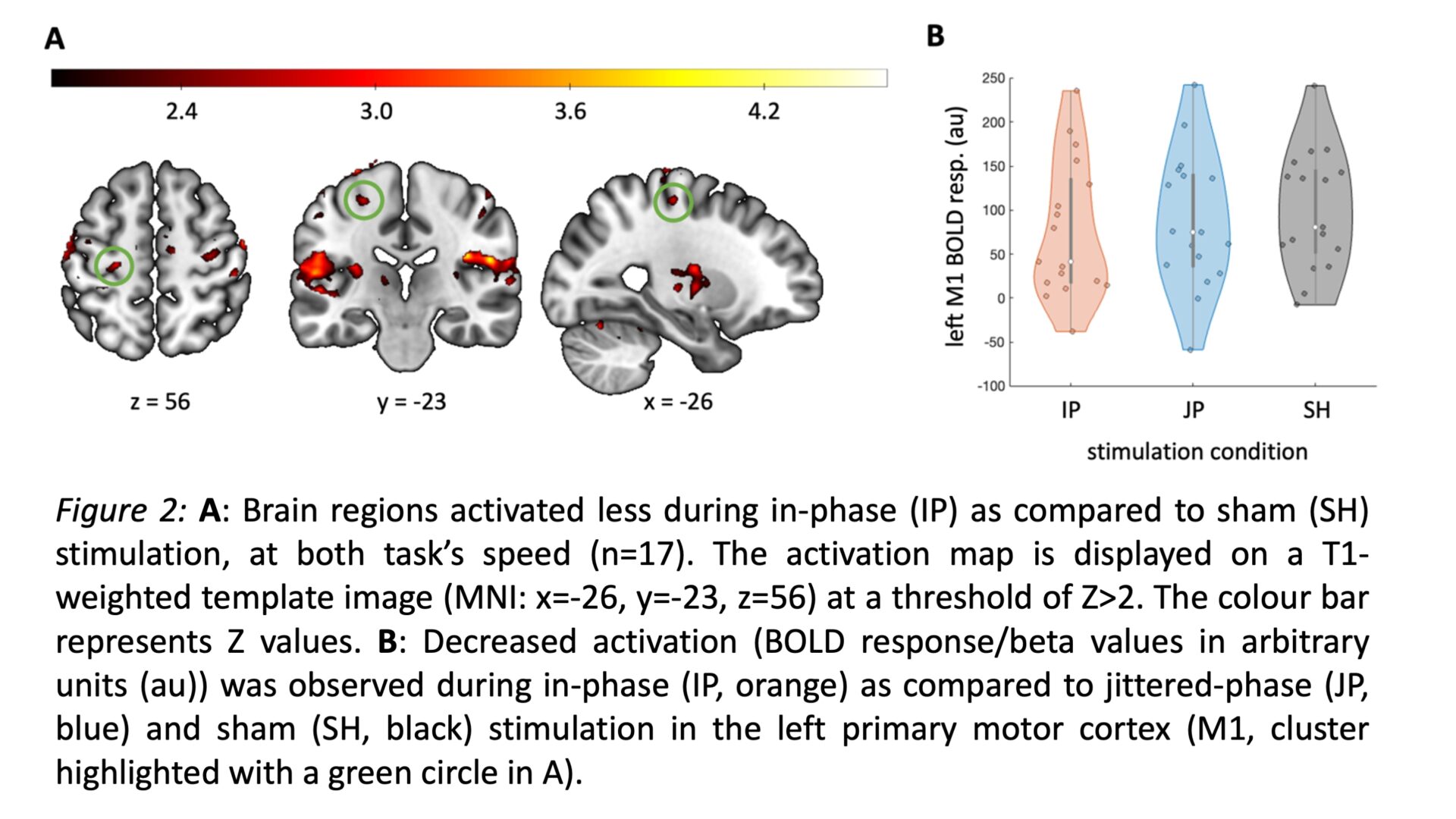Introduction: Everyday activities, such as typing or knitting, strongly depend on the interplay of both hands. This process of bimanual coordination has been related to interhemispheric connectivity between several motor areas within the beta band (15-30 Hz) (Serrien & Brown, 2002). Current research (Weinrich et al., 2017) showed that non-invasive brain stimulation, such as unifocal transcranial alternating current stimulation (tACS) in the beta band (i.e., at 20 Hz) over the primary motor cortex (M1), can induce changes in resting-state connectivity of the sensorimotor cortex as observed with functional magnetic resonance imaging (fMRI). However, the effects of bifocal beta-tACS in the context of bimanual coordination still need to be explored.
Objectives: In the current study, we investigated whether bifocal beta-tACS over both M1s during task performance can modulate behavioural and neural markers of bimanual coordination.
Methods: 18 healthy right-handed volunteers (18-35 years) participated in the study. All experimental procedures were approved by the local Ethics Committee and were conducted in accordance with the Declaration of Helsinki (2013).
Using fMRI (3T Siemens Prisma MR scanner) we recorded participants’ brain activity during a bimanual coordination task: using force grippers they had to execute well-coordinated alternating movements at two different speeds (slow and fast) following auditory cues, in a block design. While performing the task, participants could receive either in-phase, jittered-phase or sham beta (20 Hz) tACS over both M1 in a within-subject, repeated measures design. Active stimulation was applied at 4 mA (peak to peak) during each task run, which lasted 13.15 min. The order of stimulation conditions was counterbalanced across participants.
Coordination (Pearson’s correlation between forces produced by both hands), separated per stimulation and speed condition, was analysed in a linear mixed model in R, including stimulation and speed as fixed and participants as random factors. fMRI data were analysed with FSL. Task’s speeds in all three stimulation conditions were first modeled at the individual level using a general linear model. With a permissive threshold for preliminary analyses (Z>2) within the regions activated by the bimanual coordination task (see Figure 1), we then investigated whether we had group-level differences in brain activity due to speed and/or stimulation condition.
Results: At the behavioural level, our preliminary analyses showed no effect of tACS’ protocol on coordination (p>0.05), given the absence of a stimulation by speed condition interaction (p>0.05). However, volunteers showed higher performance levels during slow as compared to fast asymmetrical movements (p=0.04), highlighting a well-known effect of task speed on bimanual coordination.
At the brain activity level, we observed that motor areas, such as sensorimotor cortex, supplementary motor area and the striatum, were activated less by in-phase bifocal 20 Hz tACS over both M1, as compared to sham stimulation (Z>2) and jittered-phase stimulation (Z>2). This result was irrespective to the task’s speed (see Figure 2).
Conclusions: Our preliminary results suggest that in-phase bifocal beta-tACS over both primary motor cortices decreased activity in several motor areas in the absence of behavioural changes in coordination.


